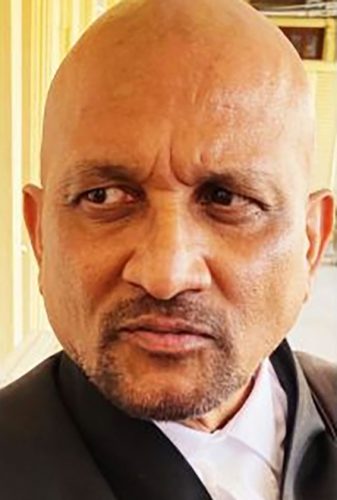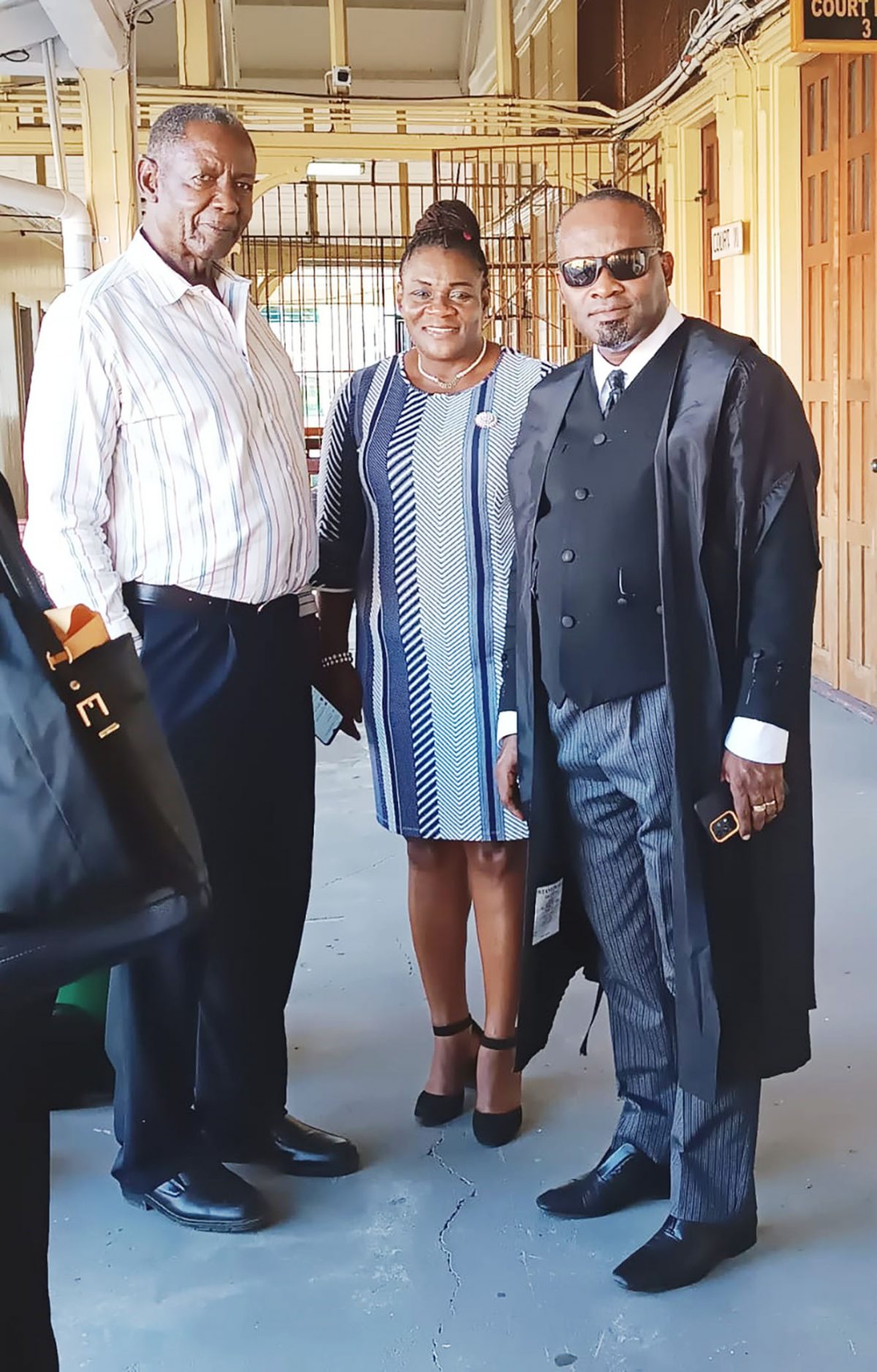As the cross-examination of Chief Education Officer Saddam Hussain continued yesterday, he could provide no definite answers on whether the Ministry of Education had formally responded to proposals from the GTU that included an appeal for salaries talks
When the documents regarding discussions on salary matters were presented to him, Hussain’s responses revealed inconsistencies in the government’s stance on multi-year agreements and negotiations with the union.
Day three of the ongoing court matter between the Guyana Teachers’ Union (GTU) and the Ministry of Education (MoE), commenced with the CEO being cross-examined on correspondence between the union and the government prior to the February 5 strike by teachers.

The first to be examined was a letter addressed to Permanent Secretary (PS) of the MoE Shannielle Hoosein-Outar on September 11, 2023, and signed by GTU General Secretary Coretta McDonald. In this letter, the union had outlined a proposal for consideration by the ministry, the contents of which included an appeal for salaries talks.
Hussain was cross-examined by Guyana Trades Union Congress legal representative Roysdale Forde, who questioned the witness on whether or not he believed that the timeframe for GTU’s proposal could’ve gone on beyond the year 2023. The CEO responded in the affirmative and after further questioning admitted that he did not respond to the letter since he was only carbon-copied same.
Hussain responded in the same manner to questions pertaining to the September 21 “Request for Concilliation” letter sent by the GTU to the Chief Labour Officer (CLO) Dhaneshwar Deonarine.
“My understanding of carbon copy is that it doesn’t require a response on my part,” he explained to the court.
Hussain further admitted that he went to the PS to discuss the contents of the letter but made no request that a letter of response be written to the union. When questioned further, under the prompting of Justice Sandil Kissoon, he also admitted that he was not aware that a response was made to the letter.
Forde then asked Hussain whether there was a response to any of the two letters that were addressed to the MoE to which he responded, “I was not copied in any so I’m not aware”.
The court also heard Hussain admitting that the GTU’s letter for conciliation and arbitration from the CLO were CC’d to him but that at the end of September 2023 there was no written communication on them from him. He also denied knowledge of any being written.
The CEO was then grilled on the part he played in issuing an open letter to the nation’s Headteachers and Teachers on January 31, alerting them that the GTU’s planned industrial action would be illegal in
nature. When he confirmed that it was he who signed the letter, Hussain was then asked if he obtained permission from ministry officials to issue the letter as well as if he had presented it to the PS before sending out same.
“Not formally,” was his response to the latter, and he added that he was not certain if either parties were aware that the letter was sent out.
Unduly
Hussain was further pressed for an explanation of the basis upon which he came to the belief that the GTU had been unduly influenced by McDonald. The GTU General Secretary is an opposition Member of Parliament. To this, he responded that salary increases were given to teachers so he didn’t understand the reason for the strike. He further stated that he felt and still feels that the strike was political in nature.
Following up on that statement, the Senior Counsel ventured to ask Hussain if he is aware that president of the Guyana Agricultural and General Workers’ Union, Seepaul Narine is a government Member of Parliament and that from 2020 to 2023 he has led his union in strikes. Hussain answered in the affirmative but when asked if he believed that those strikes were political in nature he stated, “I suppose not”.
At this juncture, state legal representative Darshan Ramdhani objected to the question, arguing on its irrelevance. However, it was overruled by Justice Kissoon who insisted on its relevance. The judge also cited that the question was already asked, and an answer was given by the witness.
Forde also focused his cross-examination on the issue of the 41 items the Ministry of Education said were part of the union’s proposal. The government had claimed that 30 of these items were attended to. However, after the Senior Counsel had gone through each of the items with him, Hussain admitted that only one of these items was in the process of being worked out, nine had no response or were not agreed upon by the government, and there was common agreement on another nine.
For the last nine, the CEO admitted that there was no written document to show same. Further, he was unable to recall the dates when they were executed. Furthermore, the witness admitted that the government decided to execute 14 of the 41 items in opposition of what was proposed.
During the course of the cross-examination, Hussain was questioned about the government’s handling of salary increases, with contradictions emerging in his responses. He was asked whether he felt that the government had acted equally upon the GTU’s requests pertaining to salary increases, to which he answered yes. The CEO, however, quickly changed his answer to “no” when Forde asked him whether a 6% increase is equal to 20%, etc.
The question was then asked, “After the proposal was submitted, did the ministry or the union meet and endeavour to satisfactorily settle the difference within 21 days?”
Hussain’s response was “no”.
After the court adjourned for lunch and reconvened in the afternoon the cross-examination concluded with questions about unresolved issues related to salary increases and debunching for teachers. Hussain admitted to the prolonged unresolved nature of these issues and acknowledged the lack of progress in resolving them over the years.
Hussain, during cross-examination also revealed that in January, the Government decided that the Ministry of Education would only negotiate with the union on a new multi-year agreement starting in 2024. When prodded by Forde, it was confirmed that this decision was not made public until March 7, in a press statement issued publicly by Hussain.
This announcement, he admitted, came after a meeting on March 4, following Court-ordered mediation, where it was agreed that salary matters from the union’s multi-year proposal would be discussed at a meeting on March 12. At the said meeting, it was revealed to the union that the ministry had no intention of having a multi-year salary discussion.
The court adjourned the matter to April 10, when the legal representatives for each side will present their oral statements.
The case stemmed from the government’s declaration that the GTU strike was illegal and its subsequent decision that strikers would not be paid. The government also decided to cease the withdrawal of union dues on behalf of the GTU and this spurred the union to go to court to challenge these measures and to insist on collective bargaining.
Justice Kissoon’s first order was the preservation of the status quo pending the substantive hearing meaning that no deductions could be made from teachers’ salaries. A subsequent statement from Hussain that deductions would be still ne made saw him being summoned by Justice Kissoon for contempt of court. Hussain apologized and Justice Kissoon later floated mediation between the two sides and eventually ordered it despite Attorney General Anil Nandlall’s objections. Two rounds of talks were held with the mediators and this resulted in the ending of the strike and a decision for bilateral talks between the ministry and the union. Two bilateral meetings were held until talks broke down on March 12 resulting in a return to the court of Justice Kissoon.





